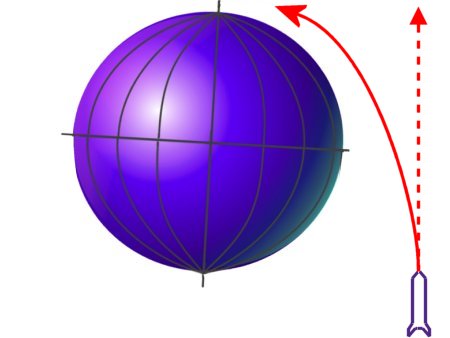|
|
|
||||||||
| |||||||||
|
|
A B C D E F G H I J K L M N O P Q R S T U V W X Y Z
| ||||||||
| 1. Newton's first law: Every object in a state of rest or in a state of uniform motion, tends to remain in that state unless an external force is applied to it. |
| Previous page |
Picture yourself in one of these new, economical cars and that you can see, in the distance, a set of traffic lights. A speed of 100 km/h is still allowed. Indeed, you know from experience, that the limit will soon be 90 km/h and shortly afterwards, 70 km/h. What do you do? No, you don't only take your foot off the gas-pedal, because then the car would slow down too much.
You should combine taking your foot off the gas-pedal with changing into neutral. You may however, still be too fast when you reach the 90 km/h- and shortly afterwards, the 70 km/h sign. This is because of the splendid wheel-bearings and the quite smooth-running tyres. However, keep an eye on the car behind you. Not everyone appreciates it, when the driver in front of them slows down early, to comply with the speed-limits.
Now, what has this to do with Newton's first law? It's quite simple: If all the natural obstacles like rolling friction and wind resistance were not present, the freewheeling car would carry on moving at 100 km/h, without losing speed. Only when the unilateral forces of resistance are applied, is the speed reduced. The test using a stone and a feather, prove that in a vacuum, both objects fall at the same speed.
| F = m * a |
It is quite correct, that in the above mentioned test, the stone and the feather fall at the same speed. However, do they ever reach a set speed? No, that would contradict Newton's second law. Have a look at the formula! There, what we're speaking about is acceleration, to be more precise: Change in velocity per time-unit. At an acceleration of 10 m/secē the speed increases by 10 m/sec every 10 meters.
This by the way, is actually the case when objects fall in a state of vacuum. Because everything falls with the same acceleration, there is, so to speak, a unitary accelleration. This is almost 10 m/sē, more precisely 9,81 m/sē. In free fall, any conceivable object would become faster and faster, faster than the fastest car or the fastest rocket, if one could create a vacuum large enough and if the object wouldn't at some point crash to earth.

In Chemistry 7, we've discussed the rocket, which has to carry it's own supply of oxygen, because it is travelling in an air-less environment (vacuum). The rocket itself however, no longer needs any propulsion force. It would always travel straight forward at the same speed, if it wasn't for the gravitational pull of large masses. Should it return to earth, it is virtually, automatically diverted in that direction. Whether or not an orbit is created, depends on which velocity adjustments have been made.
To summarise: Disregarding all resistances, eg., friction, a body endeavours to maintain it's velocity. If a propulsion continues, it would even accelerate uniformly. The gravitational pull of the earth, which is
(6 * E24)
times greater, exercises a very significant attraction.
You are probably already aware, that forces work in a certain direction. The earth's gravitation e.g., is not the same over the entire globe, otherwise the rocket would have to be guided towards the center of the earth. This force thus, depends on the vicinity to the earth. Because the earth is somewhat flattened at the poles, it would be more difficult for someone living there to jump upwards. Forces have the indicator 'F' and their unit is Newton. Mass is something completely different. This means, that the person living at the North Pole would have the same body-weight in kilograms, all over the world, presuming he uses the correct scales. 10/13
| Next page |
2001-2015 Copyright programs, texts, animations, pictures: H. Huppertz - E-Mail
Translator: Don Leslie - Email: lesdon@t-online.de

